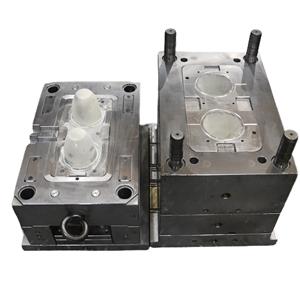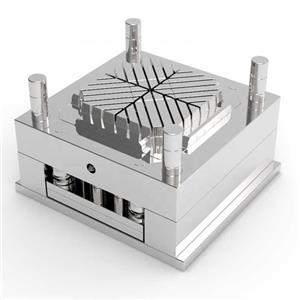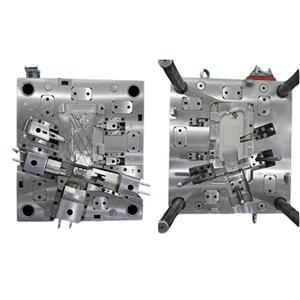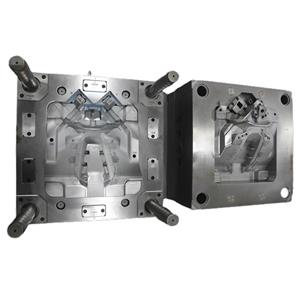Exploring the Innovative World of Automotive Bumper Technology and Styling
The Evolution of Bumper Technology: From Steel to Sophistication
Early bumpers, primarily constructed from heavy-gauge steel, served a purely functional purpose: absorbing low-speed impacts. Their design was rudimentary, often little more than a robust bar attached to the vehicle's chassis. However, these steel behemoths proved to be cumbersome and aesthetically unappealing, leading to a search for lighter, more integrated solutions.
The introduction of plastics revolutionized bumper technology. Materials like polypropylene and polyurethane offered significant advantages: lighter weight, improved impact absorption, and the ability to be molded into complex shapes. This allowed for greater design flexibility, enabling manufacturers to integrate the bumper seamlessly with the vehicle's bodywork, enhancing overall aesthetics. Modern bumpers often incorporate energy-absorbing foam structures within their plastic shells, maximizing their crashworthiness.
Furthermore, advancements in material science continue to refine bumper technology. The use of high-strength steel in certain areas, combined with strategically placed plastic components, creates a robust yet lightweight structure that optimizes both safety and fuel efficiency. The integration of sensors and radar systems within the bumper for advanced driver-assistance systems (ADAS) represents another significant technological leap.
The Aesthetics of Automotive Bumpers: Balancing Form and Function
The design of a bumper is no longer solely dictated by functional requirements. It plays a crucial role in shaping a vehicle's overall aesthetic appeal, reflecting the brand's identity and target market. Designers carefully sculpt the bumper's contours, integrating stylistic elements such as integrated fog lights, air intakes, and prominent creases to create a visually compelling and harmonious look.
Trends in automotive styling heavily influence bumper design. The current emphasis on aerodynamic efficiency has led to the development of more streamlined bumpers with carefully sculpted air dams and diffusers. These features optimize airflow around the vehicle, reducing drag and improving fuel economy. The integration of LED lighting technology further enhances the aesthetic appeal, offering brighter, more energy-efficient illumination and allowing for innovative light signatures that reinforce the brand's visual identity.
Different vehicle segments also dictate distinct bumper styling. Sporty vehicles often feature aggressive, low-slung bumpers with prominent air intakes and spoilers, while luxury cars may opt for elegant, understated designs that prioritize sophistication and refinement. The bumper's design, therefore, serves as a crucial tool for communicating the vehicle's personality and intended market.
Safety Regulations and Bumper Design: A Constant Balancing Act
Government regulations play a significant role in shaping bumper technology. Stringent crash safety standards dictate minimum performance requirements for impact absorption and pedestrian protection. These regulations drive the development of innovative materials and designs that ensure bumpers can effectively mitigate the effects of collisions, minimizing damage to the vehicle and protecting occupants and pedestrians.
Pedestrian safety has become a paramount concern, leading to the incorporation of features such as energy-absorbing materials and strategically placed impact zones in bumper designs. These features aim to reduce the severity of injuries in pedestrian collisions by minimizing the force transmitted to the pedestrian's body. Regulations often require specific testing procedures to ensure bumpers meet the required safety performance levels.
The ongoing evolution of safety standards necessitates continuous innovation in bumper technology. Manufacturers are constantly exploring new materials and designs to meet increasingly stringent requirements while balancing cost, weight, and aesthetic considerations. This ongoing development ensures that automotive bumpers remain at the forefront of vehicle safety.
The Future of Automotive Bumper Technology
The future of automotive bumper technology promises further integration of advanced materials, intelligent systems, and innovative designs. The use of lightweight composites, such as carbon fiber reinforced polymers, is expected to become more prevalent, further enhancing fuel efficiency and performance. The integration of sensors and actuators within the bumper will continue to expand, enabling advanced driver assistance systems and potentially even autonomous driving capabilities.
Furthermore, the development of self-healing materials and adaptable bumper systems could revolutionize the industry. Self-healing materials could automatically repair minor scratches and damage, reducing the need for costly repairs. Adaptable bumpers could adjust their shape and rigidity in response to varying impact scenarios, optimizing crash protection in real-time. These innovations demonstrate the ongoing commitment to improving both the safety and aesthetics of this essential automotive component.




